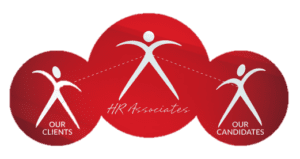
Workforce retention doesn’t have to be a hard nut to crack, if you have the right strategies. Many of 2022’s transient workers have decidedly remained on the fence, forever being the motivation behind the expression, “The Great Shuffle”. In 2021, 47 million American workers quit their jobs, as stated in a recent U.S. Chamber of Commerce (USCC) article. To remain competitive, employers must dig into the minds of this generation and see what makes them tick.
The driving motivation behind the workforce exodus is attributed to boosted unemployment benefits, stimulus payments, and the child care tax credits. All of which has given rise to worker independence and the desire for a different direction. As for the short list, these workers want an improved work-life balance and flexibility. Flexible work arrangements include options for when, where and how, the work gets done. Workers look to balance home-life while maintaining a productive work performance. Finishing out the list were better wages being followed up by a strong work culture. Wages have generally plateaued but have seen lofty gains in the last 2 years which has been a contributing factor to our inflationary economy, as well as spiking energy prices. In addition, workers look to align themselves with a stable employer with a robust culture. Such employers project long term job security and possible career advancement.
Employee Retention Strategies
Employers should always begin their retention strategy on day one, Orientation and Onboarding. Orientation should emphasize and display the company culture and what is expected of a new employee. Onboarding, on the other hand, is about taking them by the hand and showing them the company and facility as you see it. New recruit guidance through mentorship is probably the most important retention strategy an employer can provide and benefit from. Ongoing conversations, with the troops, will be invaluable to your retention goals.
According to Best Money Moves, the two of the top three benefits employers should focus on are a Financial Wellness Program & Health Benefits. Employers should educate their workforce with tools to manage personal debt. Stressing the importance of having a monthly budget, paying down debt to reduce interest charges and having a savings plan for emergencies will go a long way towards a happy crew. In addition, LendingTree’s CompareCards stated that nearly 60% of employees have paid their ever-rising, healthcare bills with a credit card. The added stress of medical bills emphasizes the importance of employers offering a less out-of-pocket healthcare plan, in addition to Financial Wellness. Several local companies now have free, on-site health clinics with free, generic prescriptions, to help negate the ever-rising cost of healthcare in the US.
Reverse Retention
Here is a novel thought, directed to managers in the habit of kicking an employee to the street, once a two week notice has been given. Exit Interviews can provide valuable insight from an employee’s perspective of your company. Begin with an employee questionnaire, followed by a personal interview. The exit interview can be very informative to issues the manager may not have known about. A manager just may find a good reason to revisit their strategies.
Appreciation
Finally, perks, recognition and rewards will go a long way to appease your peeps. Everyone likes to be appreciated for their work. Regionally, 40% of Durable Goods Manufacturing jobs are going unfilled, keeping the pulse of your workforce is a given, or should be.

Start a new direction with a top GM supplier in Sidney, Forklift @ $20 per hour + Premium Benefits!
IT Know-How? Look at this.. IT Systems Admin
More workforce strategies on the latest Connect Newsletter!

